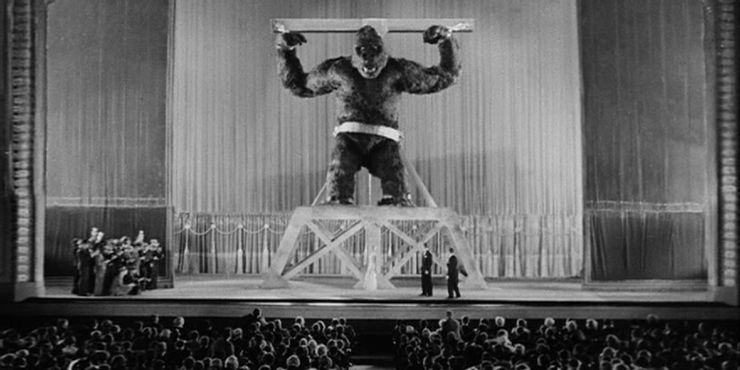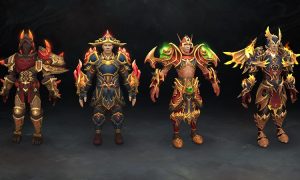Yes, The Original King Kong From 1933 Still Holds Up
Back in 1933 a movie crew made a startling discovery. American Air Force officer turned movie producer Merian C. Cooper’s long-gestating”giant ape” film was reprinted on crowds, and almost 90 decades after, King Kong looms large over movie history. King Kong wasn’t the first, nor the past, movie to incorporate gigantic creatures. Yet the film has earned its self-endowed standing as”The Eighth Wonder of the World,” cultivated an iconic principal monster which has persevered through imitators, animations, reboots (and of course motivational Donkey Kong’s title ) and inserted itself into global popular-consciousness.
Together with the forthcoming Godzilla vs. Kong, It increases the question of if the first movie can compare with contemporary scene, whether overexposure into King Kong has disillusioned crowds out of viewing his very first incarnation with new eyes. Nevertheless the 1933 RKO film remains a massive accomplishment, being an important bit of movie history which crystallizes several cinematic tendencies and remains capable to thrills audiences with its own exemplary potential.

RELATED: Position Kaiju From Most to Least Dateable
The very first group to catch King Kong aren’t dark government agencies, nor angry scientists, but filmmakers. King Kong unlocks With adventuresome director Carl Denham (Robert Armstrong) setting out to create another”jungle film” traveling to exotic places to catch authentic mythical footage. Even though the studios need him to employ a”pretty face” to accompany his own movies; not simple with his Death shoots and demanding all-male crew. Thus Carl plucks the hungry woman Ann Darrow (Fay Wray) in the Depression-era roads of New York and sets sail to the mysterious Skull Island.

Together the fringes, King Kong comprises A few meta-commentary regarding the movie business, for example, feeling of experience crowds found from escapist movies. On the voyage, Carl conducts a screen-test of Ann, inducing her to become paralyzed by fear of a few humongous menace from their camera’s sight. This really is thrilling foreshadowing of what’s going to wind up occurring in King Kong, however it is also comment on the essence of such monster films; actresses yelling at empty air.
Carl Denham can be easily read as a stand-in for King Kong’s co-director, Merian C. Cooper. Cooper had been fascinated by experience stories of crazy, exotic creatures, especially the experiences of anthropologist Paul Du Chaillu. Since Cooper became involved in the movie business, he leaned towards these quasi-colonial”jungle movies” together with his producing partner (and King Kong’s other manager ) Ernest Schoedsack. Collectively they created”documentary” images about overseas tribes and tribes, together with Grass (1925) and Chang (1927) working like a travel zoo. They were fake.
The subjects of those documentaries were actual , also Cooper (such as Denham at King Kong) Place himself in direct threat with all the live animals they managed. However, the directors recreated scenes and added the story elements , straying far from the”isolated objectivity” of documentaries. The racist undertones of these cinematic colonization also can’t be ignored, together with all these falsified accounts of overseas lands intended to shock and provoke Western crowds.
King Kong conveys Much of the identical subtext since these documentaries, but it’s the significant distinction of being fictional. It fits in the custom of post-colonial functions which take the”undiscovered country” angle into the intense, populating them not with”believable” foreign lands, but outstanding prehistoric monsters, like The Lost World (1925) comprising a island of dinosaurs manner before Jurassic Park. Carl Denham at King Kong remains a”documentarian” that grafts his narratives onto real footage, but for this movie, Cooper and Schoedsack took the jump into entirely fantastical showmanship.

Obviously, the racial undertones are still buried in King Kong, Which gets the white team experience the Skull Island natives and also find the tremendous ape King Kong they worship. However, this subtext just makes King Kong always intriguing to reinterpret. There is a scene from Quentin Tarantino’s Inglorious Basterds where Leading Hellstrom (August Diehl) plays a guessing game which brings direct parallels between King Kong and African American slaves. Now, did Cooper and RKO wish to say anything about slavery and colonialism? Probably not. But from the heritage of its colonialist experiences, King Kong includes such symbolism built. This means King Kong could be seen as equally a surface-level monster film as well as an allegorical narrative.
It will help that, given that the picture’s meaning is so obscure, King Kong can Be translated as positively anti-colonialist. Notably as Kong comes Off since the dominating star of the movie, a terrible figure infatuated by Ann and torn out of his homeland before being placed on gaudy screen in Manhattan and ruined by breaking loose. King Kong takes 40 Moments to develop the monster, however when he arrives, it is all audiences can Concentrate on. Along with his large white eyes and broad goofy grin, he Can’t help but be endearing. Even though contemporary CGI or 3D cartoon Would smooth out Kong’s idiosyncrasies and behaviour, the janky Claymation and puppetry permit him to maneuver in such willful and fascinating ways. Take such as after Kong battles and kills a T-Rex, He plays with the corpse’s jaw, as if uncertain about exactly what he is just done.



























